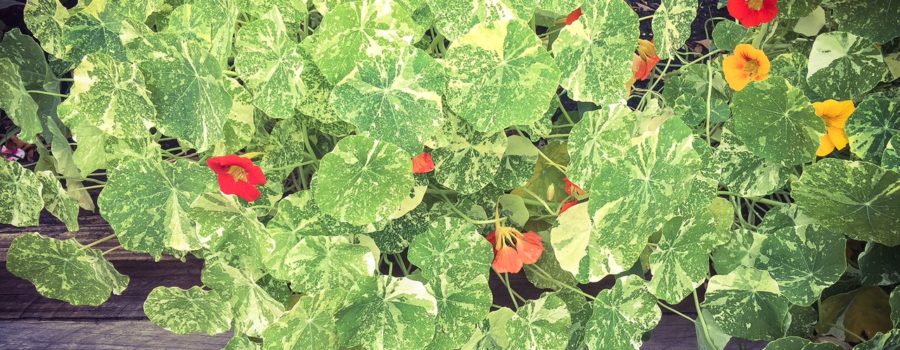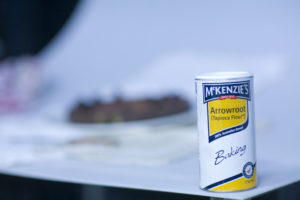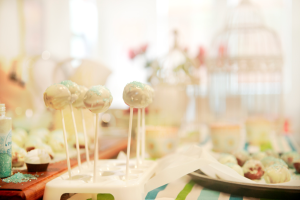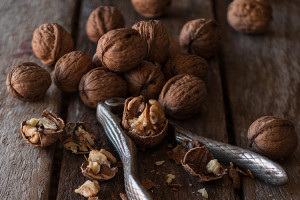Nasturtiums
The nasturtium (Tropaeolum majus) is a fast-growing hardy annual and can be just about anywhere except for cold, mountain zones. The climber and sprawler has long vine like stems, with lily-pad or umbrella shaped leaves that range in size from a few inches in diameter to six or 7 inches around and it produces beautiful flowers. The flowers have five petals and come in varying shades of yellow, orange, maroon and red flowers and are produced in summer and autumn; however, it is the middle of winter on the central coast of Australia and Nasturtiums are still producing flowers.
You can use every part of the nasturtium including the leaves, seed pods and flowers that can be put to great culinary and medicinal use. The flavour is quite peppery, a cross between mustard and slight sweetness.
These wonderful plants originated in South America and were widely used by the Meso-Americans for used as a medicinal herb and as an addition to salads. It was also used by the Incas as an herbal expectorant for chest congestion, a remedy for wounds, for urinary tract infections, kidney problems and for their general antibiotic action, used as a peppery pest repellent, as a disinfectant, wound-healing herb, diuretic and antiseptic.
These plants found their way to Europe by Spanish conquistadors in the late 15th to early 16th century and the beautiful and easy-to-grow plants quickly became widespread throughout around Europe and Britain.
In the 1600’s in England, Nasturtiums were a valued plant and were called Indian Cress because of their similarity in flavor to Watercress, although they are not in fact in the mustard family, like watercress. Leaves of both species were eaten in salads; unripe seeds and flower buds were pickled and served as a substitute for capers.
The leaves were used to prevent scurvy since the leaves are rich in Vitamin C, and to supplement the daily diet and add flavor. The peppery leaves were very popular and the seeds became a prized delicacy.
In France, their ornamental value was also appreciated: flowers were used in small flower bouquet, and planted to adorn trellises or cascade down stone walls. They became especially popular after being displayed in the palace flowerbeds of French king Louis XIV.
Up until this time most nasturtiums grown were the tall, trailing variety, but during the 19th century, breeders produced smaller, more compact types that mounded neatly into containers or formed a colorful, less sprawling edge to flower beds. These developments paralleled the gradual shift in the perception of nasturtiums from edible and herbal garden mainstays to viewing them as ornamental landscape plants, the flowers and long-lasting leaves were popular in Victorian bouquets and table arrangements and they drew much attention from Monet’s gardens and in the surrounding Giverny province.
During the 20th century, nasturtium breeding include the introduction of varieties and many different colors are now available, including pale yellow, golden, orange, brick-red, cherry pink, salmon, crimson, and dark mahogany. The recent interest in edible flowers, herbs, ornamental kitchen gardens and heirloom flowers has helped keep a full array of old and new cultivars available for every possible use.
Cooking with Nasturtiums
The entire Nasturtium plant can be used, the leaves of the Nasturtium can be used in a variety of ways, as a spicy addition to salads, as the base for pesto, or chopped and combined with softened cheeses for spreads and condiments. You can even stuff Nasturtium leaves with rice and herbs for a take on Greek dolmas. The stems can be used for salad dressings and potato salad. The seeds can be pickled in vinegar to use as a great substitute for capers. The flowers are great for adding color to salads and decorating food. You can even freeze into ice cubes to create a pretty addition for summery drinks.

Seed pods and flowers that can be put to great culinary and medicinal use. The flavour is quite peppery, a cross between mustard and slight sweetness.
Leaves have a pungent peppery taste, while the flowers are milder in flavour. If leaves and flowers are chopped up finely and added to other greens and vegetables, they are not as noticeably hot in flavour.
Tone down the mustardy bite of nasturtiums by adding a softener such as sugar, honey or syrup. Add fruit juice to a dressing that includes nasturtiums, to give it a sweeter balance.
Preparation
OK, let’s get the common sense stuff out of the way first.
- Do not eat nasturtiums that have been sprayed or treated with pesticides.
- Do not pick nasturtiums from the roadside or take them from anywhere that you cannot be sure they are safe.
- The flower buds are high in oxalic acid and therefore should not be eaten in large quantities.
Flowers should be harvested just as they open, as the smaller flowers are usually best for eating, while larger flowers are better as garnishes or for being pulled apart, chopped or minced. After picking nasturtium flowers for eating, make sure you give them a good rinse and check for any insects that might be hiding within.
For tastiest nasturtium leaves, keep the plants well-watered, which helps to moderate the spiciness of the leaves and flowers. Nasturtiums are very hardy and they don’t typically like a rich soil and thrive in poor ones, as long as they get full sun. Having aid that, the richer the
Recipe Ideas
Adding to salads
The leaves make a great substitute for rocket in a salad. Pick as close to the time needed as possible and rinse before adding to the salad.
Throw the leaves into a salad. The leaves have a hot, peppery taste and go great with sweeter lettuces rather than with other bitter greens. You can add the smaller size leaves as is or rip them up and add to the salad. The leaves are also a great substitute for watercress.
Flowers can also be used in salads and will really brighten up your dish. If the flowers are large, break up the petals rather than using them whole to keep the flavor less overwhelming, but whole flowers are ok too if like the more intense flavour and they make beautiful decorations.
Chop nasturtium stem, add with chives and mix into a potato salad for a more spicy peppery taste.
Salad dressings
This simple and easy recipe is a delight. Add 1 cup of extra-virgin olive oil, ¼ cup of balsamic vinegar, juice of 1 lemon, 3 tablespoons of honey (or agave if you a vegan) and 2 tablespoons of chopped nasturtium stems. Mix it well because the honey settles to the bottom. Mix through your salad and garnish with the nasturtium flowers as a garnish. Check out our Nasturtium Salad dressing recipe.
Using nasturtiums as caper substitutions
Use the flower buds as a good substitute for capers. Use them in any dish where you’d usually use capers, such as on pizza or in salads. Pickle them in vinegar to use as a condiment on meals, similar to capers. If the seeds are pricked with a fork before adding the vinegar, this allows the flavour of the hot vinegar to permeate the density of the seeds and helps to preserve them.
Seasoning
Borage leaves add a natural salty flavor and mature Nasturtium seeds, can be ground and used as a substitute pepper for seasoning. Combine these as an alternative to salt and pepper.
Nasturtium Butter
Chop ½ cup of nasturtium flowers and mix with 125 grams of softened butter (we use vegan butter). Depending on what flavours you like, try adding a combination of nasturtium leaves and seeds with garlic or onions. Chill in a small glass serving dish. Delicious with scrambled egg if you are vegetarian try our scrambled tofu recipe.
Nasturtium Pesto
Try substituting or combining the Nasturtium leaves with basil or other herbs to make a wonderful Pesto. Check out our Nasturtium Pesto and Nasturtium Basil Pesto recipes.

Traditional pesto is a sauce originating in Genoa, northern Italy. This is our take on this world famous sauce using Nasturtium leaves, crushed garlic, pine nuts, olive oil and vegan Parmesan.

This recipe is a variation to our Nasturtium Pesto which includes a combination of both the Nasturtium leaves, stems, basil leaves and parsley.
Nasturtium Vinegar
Add nasturtium petals and leaves to oils, dressings or vinegars. Check out our Nasturtium Vinegar recipe.

This Nasturtium Vinegar provides a fantastic savory, peppery taste that will give you that spicy hit when added to you salad dressings or sauces.
Adding as a garnish
Garnish just about any dish with the beautiful flowers will really jazz up any type of dish. They are probably best suited to savoury dishes and desserts and will give them some pizazz, whether it be to brighten up your breakfast, make appetizers more appealing, make your main course magnificent or help your dessert more desirable.
Stuffed Nasturtiums
Ideally the best stuffed Nasturtiums flowers are large and flowers in good condition. Soft cheeses, dips and guacamole all make great stuffing. Using a small teaspoon, stuff the inside the flower until about three quarters full and gently fold the petals back around the stuffing. The leaves are quite sticky which should hold the petals in place. The stuffed flower can be eaten alone or served on mini toast, crackers, sliced cucumber, sticks of celery or bell peppers. Check out our vegan cheese recipes.
Nasturtium Tea
Place one cup of flowers and/or buds in a litre of water in a pot. Cover and allow to simmer for 15 minutes. Strain and store in the fridge.
Health Benefits Nasturtiums
Scientific research has found the plant has a natural antibiotic action that is fast-working in the body. It is interesting to note that the antibiotic agent, tromalyt, has been found in the urine within one hour of digesting the herb. Noteworthy, too, is that this antibiotic does not interfere with intestinal flora, and it has been found to be effective against some microorganisms that have built up resistance to common antibiotic drugs.
Nasturtium clears out mucous conditions, which combined with its antibiotic properties allows it to be effectively used to treat bronchitis, respiratory infections and to relieve chest conditions in general. All parts of the plant appear to be antibiotic and an infusion of the leaves can be used to increase resistance to bacterial infections and to clear nasal and bronchial catarrh. The remedy seems to both reduce catarrh formation and stimulate the clearing and coughing up of phlegm. The leaves are antibacterial, antifungal, antiseptic, aperient, depurative, diuretic, emmenagogue, expectorant, laxative and stimulant. A glycoside found in the plant reacts with water to produce an antibiotic. The plant has antibiotic properties towards aerobic spore forming bacteria. Extracts from the plant have anticancer activity. The plant is taken internally in the treatment of genito-urinary diseases, respiratory infections, scurvy and poor skin and hair conditions. Externally it makes an effective antiseptic wash and is used in the treatment of baldness, minor injuries and skin eruptions. Any part of the plant can be used, it is harvested during the growing season and used fresh]. The German Commission E Monographs, a therapeutic guide to herbal medicine, approve Tropaeolum majus Nasturtium for urinary tract infections, cough and bronchitis.
In medicinal herbalism is nasturtium mostly known as an expectorant and disinfectant. Its antibacterial, anti-fungicide and antibiotic properties make it an amazing plant to help relieve infections, both internally as externally, as in disinfecting wounds and cuts. Its high content of vitamin C, helps fight bacteria, fungi, viruses, and tumors, together with other phytonutrients make it a good herb to treat scurvy. The main substances found in nasturtium are glucosinolates, mustard oil, flavonoids, carotenoids and very high levels of Vitamin A, C and D.
Eat one to two leaves three times a day for full benefits for protection from colds, viruses, measles, tummy upsets, and other nasties lurking around the neighbourhood.
Beauty Benefits of Nasturtiums
Eating a couple of leaves a day is said to help clear up acne. For skin care, apply using a cotton ball and then rinse. The tea can also be used in place of a toner for oily skin.
The ancients used to use it as a hair tonic and scientific research actually backs this up – apparently Nasturtium tea applied to the head stimulates the capillaries and so increases circulation and the flow of nutrients to the scalp. For hair growth, massage into scalp before rinsing hair. Try using daily.
An Ultra-Effective Hair Treatment. This is a bit more effort but makes is great for the hair. Mix one cup each of nettle, nasturtium and rosemary into two litres of water. Simmer in a closed pot for 15 minutes. Allow it to cool and then strain for use. Massage into scalp before rinsing out.
Growing Nasturtiums – Hints & Tips
Nasturtiums are good companion plants. They excrete a strong pungent essence into the air and soil, which has been found to deter aphids, white fly and root pests; and the essence secreted into the soil is also absorbed by other plants, helping them to resist attack by pests and disease. Plant nasturtiums between cabbages, broccoli, melons, cucumbers, pumpkins, potatoes, and around fruit trees.
Nasturtiums can also be made into a natural pest deterrent. To make this Natural Aphid Spray, add a bunch of nasturtium leaves and infuse in boiling water then allow to cool, then strain into a spray bottle and add a squirt of liquid soap. Use as a spray for aphids on vegetables and other plants.
Nasturtium is a vigorous ground sprawler, when the plants have thickened up and started to spread, start picking the leaves and flowers to eat.
Nasturtiums are very easy to grow. They are easy to grow from seed and actually flower better in poor soil. A rich soil will give you a lot of leaves and few flowers and also have more bite in the leaves. They do not like a rich soil and thrive in poor ones as it in full sun. You could even grow them in a pot inside as long as they get full sunlight and the potting soil is not too rich.
Be careful where you want to plant your Nasturtiums as they self-seed really easily and if conditions are right, they can pretty much take over.
They are frost tender and so will die down completely in winter in colder areas, but they will come back with a vengeance in spring.
Try growing different colours and varieties – they will cross-pollinate and you may get some interesting results.













